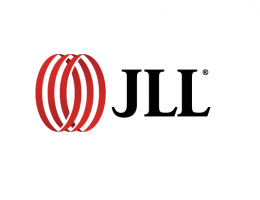(4 August 2022, Singapore) Investment in Asia Pacific commercial real estate decreased by 17% year-on-year in the first half of 2022, due to a moderation of deal activity in several of the region’s major economies. According to data and analysis published in the JLL (NYSE: JLL) Q2 2022 Capital Tracker, direct real estate investments in Asia Pacific totalled US$70.9 billion in the first half as a tightening rate cycle and inflationary concerns began to affect transaction activity in the latter months.

“Investment volumes in the first half declined moderately from the high base set in 2021 as external factors emerged, resulting in investors adjusting capital deployment strategies to align with a more aggressive rate tightening cycle. Encouragingly, dry powder levels remain high and we are seeing that the appetite for real assets remains strong. Clear opportunities exist and we’re advising clients to expect a new price discovery phase to remain a dominant theme for the remainder of 2022, as macroeconomic headwinds and ongoing inflationary pressures influence decisions,” says Stuart Crow, CEO, Capital Markets, Asia Pacific, JLL.
The Asia Pacific office sector remained the region’s most liquid asset class, drawing US$30.6 billion in investments in the first half, declining a modest 8% year-on-year from last year’s high base. Industrial and logistics investments (US$14.6 billion) tapered off by 37% from record volumes in 2021, while deployments into retail assets (US$14.0 billion) declined by 31% year-on-year. Investments into alternative assets (US$1.4 billion), such as data centres declined modestly, dropping by 12% year-on-year.
Asia Pacific-dedicated fundraising continued its momentum despite falls in global activity. In a sign of the longer-term positivity in the Asia Pacific real estate sector, development focused funds in logistics, living, data centres, India, and Southeast Asia continue to secure financial commitments from global and regional institutional investors.
The impact of the pandemic-influenced lockdowns weighed on China in the first half with investment volumes of US$14.1 billion representing a year-on-year contraction of 39%. Japan volumes (US$11.5 billion) decreased by 33% in the first half due to a lack of logistics transactions. Activity in Australia declined by 27% year-on-year to end the half at US$9.8 billion.
South Korea (US$15.3 billion) emerged as the region’s largest market by volume in the first half, remaining flat year-on-year, buoyed by office transactions including SK U-Tower and A+ Asset Tower in Seoul. Gains were registered in Singapore (US$9.3 billion), with 81% year-on-year growth supported by large ticket office and mixed-use transactions including Income@Raffles and in Hong Kong (US$5.0 billion), up 18% driven by a number of en-bloc industrial sales.
Additionally, sustainability frameworks emerged as high on the agenda for investment committees, influencing acquisition decisions. JLL expects investors to deploy more capital into value-add strategies by refurbishing old offices into green buildings as occupiers increasingly choose higher quality space post-pandemic. “The market adjusted to new realities over the first half, which was reflected in more muted investment activity. Capital remains committed to the Asia Pacific real estate market but deployments will be more selective as investors play the long game and price in financial market tightening to any investments for the foreseeable future,” says Pamela Ambler, Head of Investor Intelligence & Strategy, Capital Markets, Asia Pacific, JLL.











